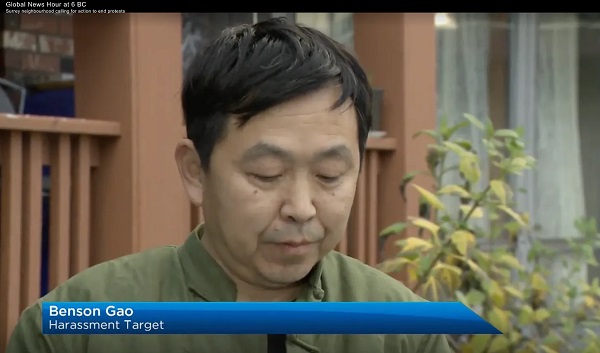International
Rescue group issues warning to Jews, Americans over potential terrorist threats
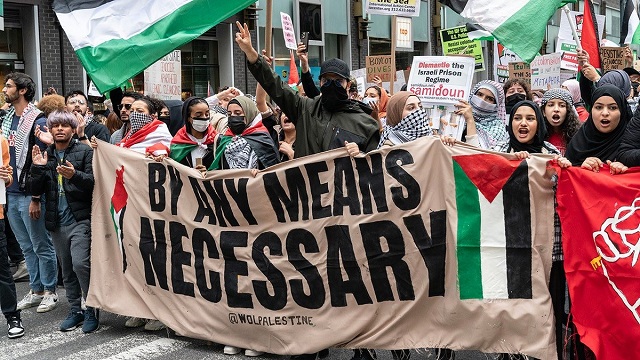
From The Center Square
By
“We strongly urge Jewish communities across the United States to remain vigilant and aware of potential threats during this period, particularly from October 2nd to October 12th.”
Approaching the one-year anniversary of the Oct. 7 terrorist attack against Israel, a group responsible for numerous rescue missions, including evacuating hundreds of Americans from Israel, has issued a warning about antisemitism-related threats in the U.S.
“We are deeply alarmed by the rising tide of open and brazen protests against Jews and Jewish communities over the past year – acts that have reached a scale unseen since World War II. These demonstrations have fostered an environment of heightened vulnerability for Jewish communities across the United States,” Project Dynamo, a group of former soldiers, military officers, national security officials, and intelligence officers, said in an advisory.
“History teaches us that terrorist organizations, including those that inspire groups like Hamas, often select significant dates and anniversaries as opportune moments for attacks, seeking to amplify their visibility and influence among their followers. The upcoming one-year anniversary of the October 7th attacks by Hamas, occurring between the Jewish High Holidays of Rosh Hashanah and Yom Kippur, represents precisely the kind of symbolic timing that such groups are likely to exploit.
“We strongly urge Jewish communities across the United States to remain vigilant and aware of potential threats during this period, particularly from October 2nd to October 12th.”
The veteran-led, Tampa-based Project Dynamo helped rescue hundreds of Americans from Israel, working with Gov. Ron DeSantis. The state of Florida helped fund hundreds of flights for evacuees.
Within days of the attack, DeSantis declared a state of emergency and directed the Division of Emergency Management to execute a “Comprehensive Emergency Management Plan and other response, recovery, and mitigation plans necessary to cope with the emergency, including any logistical, rescue, or evacuation operations to bring Americans home who were stranded in Israel.”
Within a few weeks, Florida helped bring home nearly 700 Americans stranded in Israel, The Center Square reported.
“Unlike the governments of other countries, the Biden Administration has failed to launch any form of rescue or evacuation operations for Americans, including Floridians, who are stranded in the region, and has failed to provide information requested by the State of Florida about any plans for such operations,” DeSantis said at the time.
The Florida legislature also convened for a special legislative session to expand state sanctions on Iran.
In the absence of the federal government issuing a National Terrorism Advisory System Bulletin related to terrorist threats, Project Dynamo issued its own advisory.
The U.S. Department of Homeland Security has not issued a NTAS bulletin since May 2023. The NTAS was “designed to communicate information about terrorist threats by providing timely, detailed information to the American public. All Americans share responsibility for the nation’s security, and should always be aware of the heightened risk of terrorist attack in the United States and what they should do,” DHS says.
A congressional coalition led by U.S. Rep. Andy Biggs, R-AZ, called on DHS to issue one in July, asking why it hasn’t done so. When The Center Square asked DHS why it hadn’t issued one in over 15 months, DHS did not respond.
DHS has still not issued an NATS bulletin after President Joe Biden extended a national emergency due to terrorism threats.
Retired FAA special agent Brian Sullivan told The Center Square Americans need to be vigilant as the Oct. 7 attack anniversary approaches and during the Jewish holidays. “Despite the warnings coming from security experts, (like Project Dynamo),” he’s asked why the Biden-Harris administration hasn’t sent out an NATS bulletin “to encourage awareness and vigilance amongst the American public.”
Project Dynamo also points to the border crisis as a cause for heightened awareness saying that actions taken by international criminal organizations and criminal groups “involving illegal immigrants within our borders signify a troubling escalation of violence and a blatant disregard for U.S. laws and the American way of life.”
“Given the confirmed connections between Transnational Criminal Organizations – including cartels and gangs – and Islamic terrorism, coupled with the increasing hostility of both state and non-state actors towards the United States, this period of vigilance should extend beyond the general elections and well into the inauguration day in January 2025.
“There have already been arrests of suspected terrorist planning attacks on high profile locations. There are other non-specific threats and enough reporting to indicate a widespread likelihood that enemies of the Jewish people will attempt activities to gain notoriety on 7 October, inside the United States, and likely around the world.”
Project Dynamo lists actions the Jewish community and Americans can take to better protect themselves.
“Now is the time to stand together and ensure that our communities are well-prepared,” it says. “We encourage you to take these threats seriously and to act with the appropriate level of caution during this sensitive time.”
Artificial Intelligence
AI Faces Energy Problem With Only One Solution, Oil and Gas


From the Daily Caller News Foundation
Which came first, the chicken or the egg? It’s one of the grand conundrums of history, and it is one that is impacting the rapidly expanding AI datacenter industry related to feeding its voracious electricity needs.
Which comes first, the datacenters or the electricity required to make them go? Without the power, nothing works. It must exist first, or the datacenter won’t go. Without the datacenter, the AI tech doesn’t go, either.
Logic would dictate that datacenter developers who plan to source their power needs with proprietary generation would build it first, before the datacenter is completed. But logic is never simple when billions in capital investment is at risk, along with the need to generate profits as quickly as possible.
Dear Readers:
As a nonprofit, we are dependent on the generosity of our readers.
Please consider making a small donation of any amount here.
Thank you!
Building a power plant is a multi-year project, which itself involves heavy capital investment, and few developers have years to wait. The competition with China to win the race to become the global standard setters in the AI realm is happening now, not in 2027, when a new natural gas plant might be ready to go, or in 2035, the soonest you can reasonably hope to have a new nuclear plant in operation.
Some developers still virtue signal about wind and solar, but the industry’s 99.999% uptime requirement renders them impractical for this role. Besides, with the IRA subsidies on their way out, the economics no longer work.
So, if the datacenter is the chicken in this analogy and the electricity is the egg, real-world considerations dictate that, in most cases, the chicken must come first. That currently leaves many datacenter developers little choice but to force their big demand loads onto the local grid, often straining available capacity and causing utility rates to rise for all customers in the process.
This reality created a ready-made political issue that was exploited by Democrats in the recent Virginia and New Jersey elections, as they laid all the blame on their party’s favorite bogeyman, President Donald Trump. Never mind that this dynamic began long before Jan. 20, when Joe Biden’s autopen was still in charge: This isn’t about the pesky details, but about politics.
In New Jersey, Democrat winner Mikie Sherrill exploited the demonization tactic, telling voters she plans to declare a state of emergency on utility costs and freeze consumers’ utility rates upon being sworn into office. What happens after that wasn’t specified, but it made a good siren song to voters struggling to pay their utility bills each month while still making ends meet.
In her Virginia campaign, Democrat gubernatorial winner Abigail Spanberger attracted votes with a promise to force datacenter developers to “pay their own way and their fair share” of the rising costs of electricity in her state. How she would make that happen is anyone’s guess and really didn’t matter: It was the tactic that counted, and big tech makes for almost as good a bogeyman as Trump or oil companies.
For the Big Tech developers, this is one of the reputational prices they must pay for putting the chicken before the egg. On the positive side, though, this reality is creating big opportunity in other states like Texas. There, big oil companies Chevron and ExxonMobil are both in talks with hyperscalers to help meet their electricity needs.
Chevron has plans to build a massive power generation facility that would exploit its own Permian Basin natural gas production to provide as much as 2.5 gigawatts of power to regional datacenters. CEO Mike Wirth says his team expects to make a final investment decision early next year with a target to have the first plant up and running by the end of 2027.
ExxonMobil CEO Darren Woods recently detailed his company’s plans to leverage its expertise in the realm of carbon capture and storage to help developers lower their emissions profiles when sourcing their needs via natural gas generation.
“We secured locations. We’ve got the existing infrastructure, certainly have the know-how in terms of the technology of capturing, transporting and storing [carbon dioxide],” Woods told investors.
It’s an opportunity-rich environment in which companies must strive to find ways to put the eggs before the chickens before ambitious politicians insert themselves into the process. As the recent elections showed, the time remaining to get that done is growing short.
David Blackmon is an energy writer and consultant based in Texas. He spent 40 years in the oil and gas business, where he specialized in public policy and communications.
Crime
CBSA Bust Uncovers Mexican Cartel Network in Montreal High-Rise, Moving Hundreds Across Canada-U.S. Border
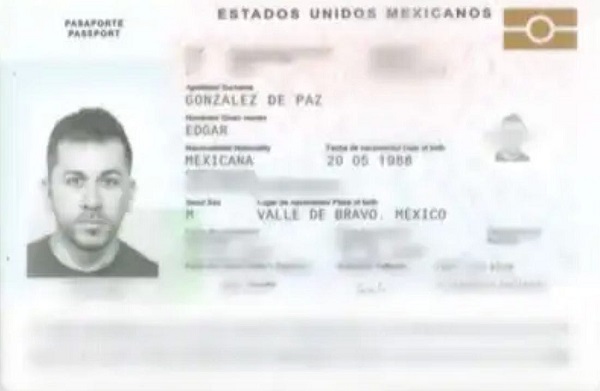
A court document cited by La Presse in prior reporting on the case.
The conviction targets Edgar Gonzalez de Paz, 37, a Mexican national identified in court evidence as a key organizer in a Montreal-based smuggling network that La Presse documented in March through numerous legal filings.
According to the Canada Border Services Agency, Gonzalez de Paz’s guilty plea acknowledges that he arranged a clandestine crossing for seven migrants on January 27–28, 2024, in exchange for money. He had earlier been arrested and charged with avoiding examination and returning to Canada without authorization.
Breaking the story in March, La Presse reported: “A Mexican criminal organization has established itself in Montreal, where it is making a fortune by illegally smuggling hundreds of migrants across the Canada-U.S. border. Thanks to the seizure of two accounting ledgers, Canadian authorities have gained unprecedented access to the group’s secrets, which they hope to dismantle in the coming months.”
La Presse said the Mexico-based organization ran crossings in both directions — Quebec to the United States and vice versa — through roughly ten collaborators, some family-linked, charging $5,000 to $6,000 per trip and generating at least $1 million in seven months.
The notebooks seized by CBSA listed clients, guarantors, recruiters in Mexico, and accomplices on the U.S. side. In one April 20, 2024 interception near the border, police stopped a vehicle registered to Gonzalez de Paz and, according to evidence cited by La Presse, identified him as one of the “main organizers,” operating without legal status from a René-Lévesque Boulevard condo that served as headquarters.
Seizures included cellphones, a black notebook, and cocaine. A roommate’s second notebook helped authorities tally about 200 migrants and more than $1 million in receipts.
“This type of criminal organization is ruthless and often threatens customers if they do not pay, or places them in a vulnerable situation,” a CBSA report filed as evidence stated, according to La Presse.
The Montreal-based organization first appeared on the radar in a rural community of about 400 inhabitants in the southern Montérégie region bordering New York State, La Presse reported, citing court documents.
On the U.S. side of the line, in the Swanton Sector (Vermont and adjoining northern New York and New Hampshire), authorities reported an exceptional surge in 2022–2023 — driven largely by Mexican nationals rerouting via Canada — foreshadowing the Mexican-cartel smuggling described in the CBSA case.
Gonzalez de Paz had entered Canada illegally in 2023, according to La Presse. When officers arrested him, CBSA agents seized 30 grams of cocaine, two cellphones, and a black notebook filled with handwritten notes. In his apartment, they found clothing by Balenciaga, a luxury brand whose T-shirts retail for roughly $1,000 each.
Investigators have linked this case to another incident at the same address involving a man named Mario Alberto Perez Gutierrez, a resident of the same condo as early as 2023.
Perez Gutierrez was accompanied by several men known to Canadian authorities for cocaine trafficking, receiving stolen goods, armed robbery, or loitering in the woods near the American border, according to a Montreal Police Service (SPVM) report filed as evidence.
The CBSA argued before the immigration tribunal that Gonzalez de Paz belonged to a group active in human and drug trafficking — “activities usually orchestrated by Mexican cartels.”
As The Bureau has previously reported, Justin Trudeau’s Liberal Cabinet was warned in 2016 that lifting visa requirements for Mexican visitors would “facilitate travel to Canada by Mexicans with criminal records,” potentially including “drug smugglers, human smugglers, recruiters, money launderers and foot soldiers.”
CBSA “serious-crime” flags tied to Mexican nationals rose sharply after the December 2016 visa change. Former CBSA officer Luc Sabourin, in a sworn affidavit cited by The Bureau, alleged that hundreds of cartel-linked operatives entered Canada following the visa lift.
The closure of Roxham Road in 2023 altered migrant flows and increased reliance on organized smugglers — a shift reflected in the ledger-mapped Montreal network and a spike in U.S. northern-border encounters.
The Bureau is a reader-supported publication.
To receive new posts and support my work, consider becoming a free or paid subscriber.
-

 Crime1 day ago
Crime1 day agoCBSA Bust Uncovers Mexican Cartel Network in Montreal High-Rise, Moving Hundreds Across Canada-U.S. Border
-

 Environment1 day ago
Environment1 day agoThe Myths We’re Told About Climate Change | Michael Shellenberger
-
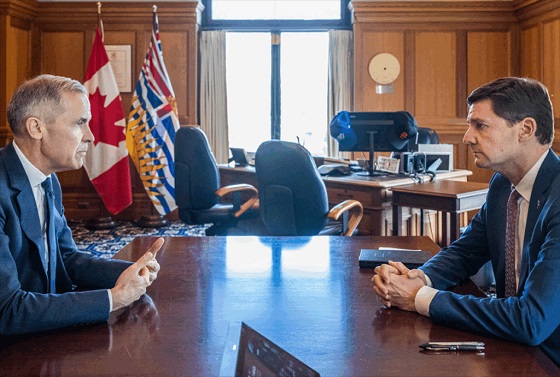
 Energy2 days ago
Energy2 days agoIt should not take a crisis for Canada to develop the resources that make people and communities thrive.
-

 Dr John Campbell2 days ago
Dr John Campbell2 days agoCures for Cancer? A new study shows incredible results from cheap generic drug Fenbendazole
-

 Artificial Intelligence1 day ago
Artificial Intelligence1 day agoAI Faces Energy Problem With Only One Solution, Oil and Gas
-

 Health1 day ago
Health1 day agoLack of adequate health care pushing Canadians toward assisted suicide
-
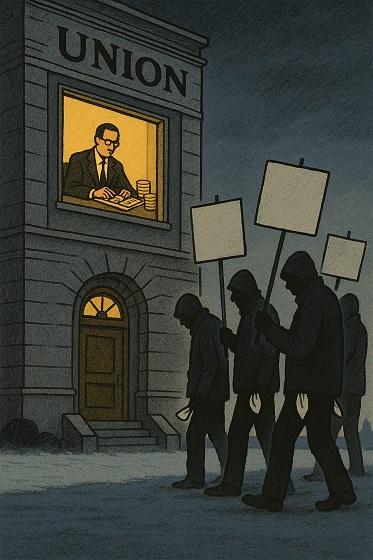
 Alberta23 hours ago
Alberta23 hours agoATA Collect $72 Million in Dues But Couldn’t Pay Striking Teachers a Dime
-

 Media23 hours ago
Media23 hours agoBreaking News: the public actually expects journalists to determine the truth of statements they report




